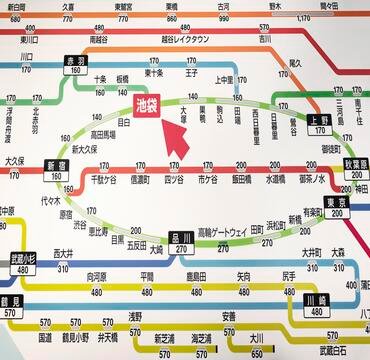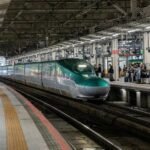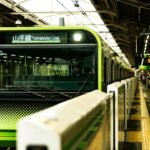Japan and most relevant Tokyo transportation system (東京の交通システム)
Introduction
Japan boasts one of the most efficient transportation systems in the world, with Tokyo’s network standing out for its complexity, punctuality, and user-friendliness. Whether you’re a tourist or a resident, understanding Tokyo’s transportation options is key to exploring the city and beyond. This article covers the history, cultural significance, major transportation modes, seasonal considerations, and essential tour information for navigating Tokyo.
◆ Basic Information’s:
-
Punctuality & Efficiency: Japan’s transportation is known for its on-time performance and reliability.
-
Diverse Modes: Tokyo offers trains, subways, buses, taxis, and ferries for convenient citywide access.
-
Train Network: JR East lines and Tokyo Metro are the primary systems connecting key districts and tourist spots.
-
IC Cards: Suica and PASMO cards provide easy, cashless travel across multiple transportation modes.
-
Cultural Etiquette: Maintain quietness on trains and respect priority seating.
-
Seasonal Considerations: Transportation adapts to high-demand periods like cherry blossom season and New Year holidays.
-
### Quick Travel Tips:
-
Download apps like Navitime or Google Maps for real-time transit information.
-
Travel during off-peak hours to avoid crowds.
-
Use an IC card (Suica/PASMO) for hassle-free transport and shopping.
-
Look for English signage and station maps for easier navigation.
Ready to explore Tokyo? Plan ahead, respect local customs, and enjoy seamless travel across Japan’s vibrant capital!
Tokyo's Transportation: Image Gallery
1. Historical Overview of Japan’s Transportation System
Early Developments
Meiji Era (1868-1912): Japan’s modernization began with the introduction of railways in 1872, connecting Tokyo and Yokohama.
Tokyo’s First Subway: Opened in 1927, the Ginza Line was Asia’s first underground railway.
Post-War Expansion
Shinkansen Introduction (1964): The world’s first high-speed rail system launched in time for the Tokyo Olympics.
Metro and JR Network Growth: Rapid urbanization led to the expansion of subway lines and Japan Railways (JR) services.
Modern Innovations
Contactless payment systems like Suica and PASMO revolutionized commuting.
Tokyo prepares for future expansions, including driverless trains and sustainability initiatives.
2. Major Transportation Modes in Tokyo
2.1 Trains and Subways
JR East: Operates the extensive Yamanote Line (Tokyo’s central loop), connecting major districts.
Tokyo Metro & Toei Subway: Together, they operate over 13 lines covering the city’s core and suburbs.
Tips for Tourists:
Use Tokyo Subway Tickets for unlimited rides (24, 48, or 72-hour options).
Peak hours (7:30 AM – 9:30 AM & 5 PM – 7 PM) can be extremely crowded.
2.2 Shinkansen (Bullet Train)
Connects Tokyo with cities like Kyoto, Osaka, and Hokkaido.
Tokyo Station: Main hub for Shinkansen services.
Japan Rail Pass: Ideal for travelers exploring multiple regions.
2.3 Buses and Trams
Toei Buses: Cover areas less accessible by train.
Tokyo Sakura Tram (Toden Arakawa Line): Offers a nostalgic ride through residential areas.
Tips: Cash and IC cards are accepted; routes are displayed in English.
2.4 Taxis and Ride-Sharing
Widely available but more expensive than public transport.
App services: JapanTaxi and DiDi offer cashless options.
Late-night travel: Taxis are convenient after train services end (around midnight).
2.5 Ferries and Water Buses
Tokyo’s waterways offer scenic transport options.
Sumida River Cruise: Connects Asakusa, Odaiba, and Tokyo Bay areas.
3. Cultural Aspects and Etiquette
3.1 Train Etiquette
Stay quiet; phone calls are discouraged.
Priority seats should be offered to the elderly, pregnant women, and those with disabilities.
Stand on the left side of escalators (except in Osaka, where it’s the right).
3.2 Season-Specific Travel Tips
Spring (March-May): Visit cherry blossom spots like Ueno Park; expect crowded trains during hanami season.
Summer (June-August): Stay hydrated; consider using JR cooling stations.
Autumn (September-November): Ideal for scenic train rides to see autumn foliage.
Winter (December-February): Check train schedules for New Year’s holidays; Shinkansen travel increases during this period.
4. Tour Information & Essential Tips
4.1 Popular Tourist Routes
Tokyo Station → Shibuya → Harajuku → Shinjuku: A day exploring Tokyo’s vibrant districts.
Odaiba via Yurikamome Line: Offers panoramic views of Tokyo Bay.
Nikko and Hakone Day Trips: Easily accessible via JR and private railway lines.
4.2 Specific Locations and Travel Times
Narita Airport → Tokyo Station: Approximately 60 minutes via Narita Express (N’EX).
Haneda Airport → Shibuya: Around 30 minutes via Keikyu and Tokyo Metro lines.
Tokyo Station → Mt. Fuji (Kawaguchiko): About 2 hours by train and bus.
4.3 IC Cards and Passes
Suica/PASMO: Prepaid cards usable on trains, buses, and at convenience stores.
Tokyo Free Kippu: Unlimited rides on metro, JR lines within central Tokyo.
JR Pass: Cost-effective for long-distance travelers.
5. Seasonal Events and Transportation Considerations
Spring:
Cherry Blossom Viewing: Extra train services are often added to popular parks.
Golden Week (late April – early May): Expect crowded trains; book tickets early.
Summer:
Fireworks Festivals: Increased train frequency; some stations may have special exits.
Obon Festival (mid-August): Busy travel period for family reunions.
Autumn:
Cultural Festivals: Easy access via public transport; plan routes ahead.
Cooler Weather: Comfortable for cycling and walking tours.
Winter:
New Year’s Shrine Visits: Trains operate on special holiday schedules.
Illumination Events: Popular night-time attractions accessible by train.
6. Sustainable and Future Transportation Initiatives
Tokyo’s Eco-Friendly Projects: Introduction of electric buses and green taxis.
2025 Vision: Focus on reducing carbon emissions and improving public transport accessibility.
Conclusion
Tokyo’s transportation system exemplifies efficiency, punctuality, and convenience. With careful planning and an understanding of local etiquette, navigating the city can be smooth and enjoyable. From high-speed Shinkansen journeys to leisurely tram rides, Tokyo offers diverse options catering to every traveler’s needs. Whether you’re visiting iconic landmarks, exploring hidden gems, or embarking on day trips, Tokyo’s transportation network ensures seamless connectivity across the seasons.









